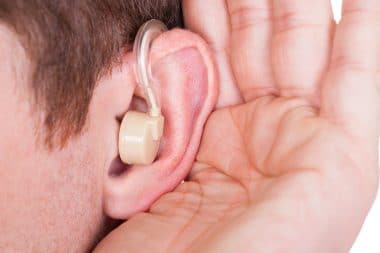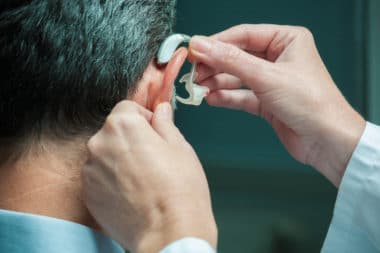If you are experiencing hearing loss, then there is a good chance that your doctor or audiologist may suggest a hearing aid. If you have only just begun to develop hearing issues, then you may be rather unaware of how a hearing aid functions or which one is right for you.
The good news is that you can get plenty of guidance in this area. If you have any questions at all on how to select the right hearing aid for you, then this is the guide to follow:
Speak to Your Healthcare Specialists
Your first and foremost contacts for hearing aid related information should be those directly involved in your treatment. This will probably include your doctor as well as an audiologist who may diagnose you and run tests to determine the kind of hearing loss that you are suffering from.
It is important to remember that these individuals have the most amount of understanding regarding your condition. This includes the type of hearing loss, causes, and other factors. At the same time, they are fully aware of your independent elements that can impact the choice of a hearing aid.
Furthermore, these experts are well-versed in the medical industry. Due to this, they stay up-to-date on the latest devices and are fully aware of just how relevant they may be for you.
Know the Types
There are actually more types and styles of hearing aids than most people realize. Now, there are two main types. These are analog and digital. Analog aids turn sound into electrical signals and then simply make them louder. These devices tend to have a limited number of settings and are the cheaper option.
Then, you have digital hearing aids. Here, the sound waves are converted into numerical codes that are then amplified. This code can include details about the direction of a sound as well as its pitch and volume. In many cases, these hearing aids will adjust themselves automatically to suit their surroundings.
Hearing aids can further be divided into styles. The styles are dependent on size, placement, and capabilities in volume adjustment. They are as follows:
Canal Hearing Aids
There are three types of canal hearings aids — in-the-canal, completely-in-the-canal, and invisible-in-canal. These hearing aids are suitable for people with mild to severe hearing loss. Their main advantage is that they are very difficult to see once they are in your ear canal. This is especially true for completely-in-canal and invisible-in-canal aids.
This doesn’t mean that these hearing aids are for everyone, though. They aren’t a good option for anyone who has trouble with small devices. Due to their size, these devices can be rather difficult to adjust or even remove or replace in your ear.
In-the-Ear Hearing Aids
These hearing aids fit in your outer ear and work for individuals with mild to severe hearing aids. The devices consist of a hard case that houses the electronics. Although these hearing aids are larger than the canal hearing devices, this is actually a benefit.
The larger size means that the devices are easier to handle. Not to mention, they feature a larger battery, reducing the need for you to change or recharge the batteries on a regular basis. They may also potentially have other features like volume control due to their increased size.
Behind the Ear Hearing Aids
These hearing aids consist of a plastic mold that sits behind the ear. The sound is then directed to your ears via a tube to an ear mold. Now, these are the largest of the hearing aids, but they have been downsized in recent times. One of the biggest benefits with this style is that they are suitable for virtually everyone.
Also, traditionally, they are known for greater amplification. At the same time, this does increase the risk of the hearing aid picking up wind sounds as well.
Receiver in Canal or Receiver in Ear
This device is similar to that of a behind the ear hearing aid. This is because there is a plastic housing that sits behind the ear and that feeds sound into the ear canal. The main difference is that this process takes place via a wire rather than tubing.
The benefit is here is that these tend to be less visible than behind the ear hearing aids. At the same time, they have manual control options. This allows you to adjust your hearing aid as needed.
Look for Additional Features
These days, hearing aids are more advanced than ever before. As such, they come equipped with more features. Now, while many of these are pretty impressive, they aren’t all necessary. Thus, it is your job to discern which ones are important and which ones you can do without.
One of the top features that you should consider is noise reduction. While most models will have this feature to a certain extent, some offer more support than others. Then there are the ones that also cut down on wind noise as well.
Directional microphones can be handy if you tend to be in environments with lots of background noise. This feature can improve a hearing aid’s ability to pick up noises from right in front of them instead of behind.
Another thing that you should look at is wireless connectivity or Bluetooth features. Living in a digital world means that you have to constantly be attached to various devices. Wireless connectivity means that you can automatically connect and hear these devices. As such, this can make your daily life a great deal easier.
Variable programming is a good option if you are tired of having to deal with random settings. With this feature, you will be able to select from preprogrammed settings that will be far better suited to your personal needs.
On a similar note, a hearing aid with remote controls can make things easier for you as well. With the help of a remote, you won’t need to fiddle around with your hearing aid anymore. Instead, a push of the button will make the necessary changes.
These are the main things that you should know about hearing aid selection. Once you are aware of the fundamental elements, choosing one for yourself becomes a whole lot easier. At the very least, it ensures that you know precisely what you are doing.








Reply